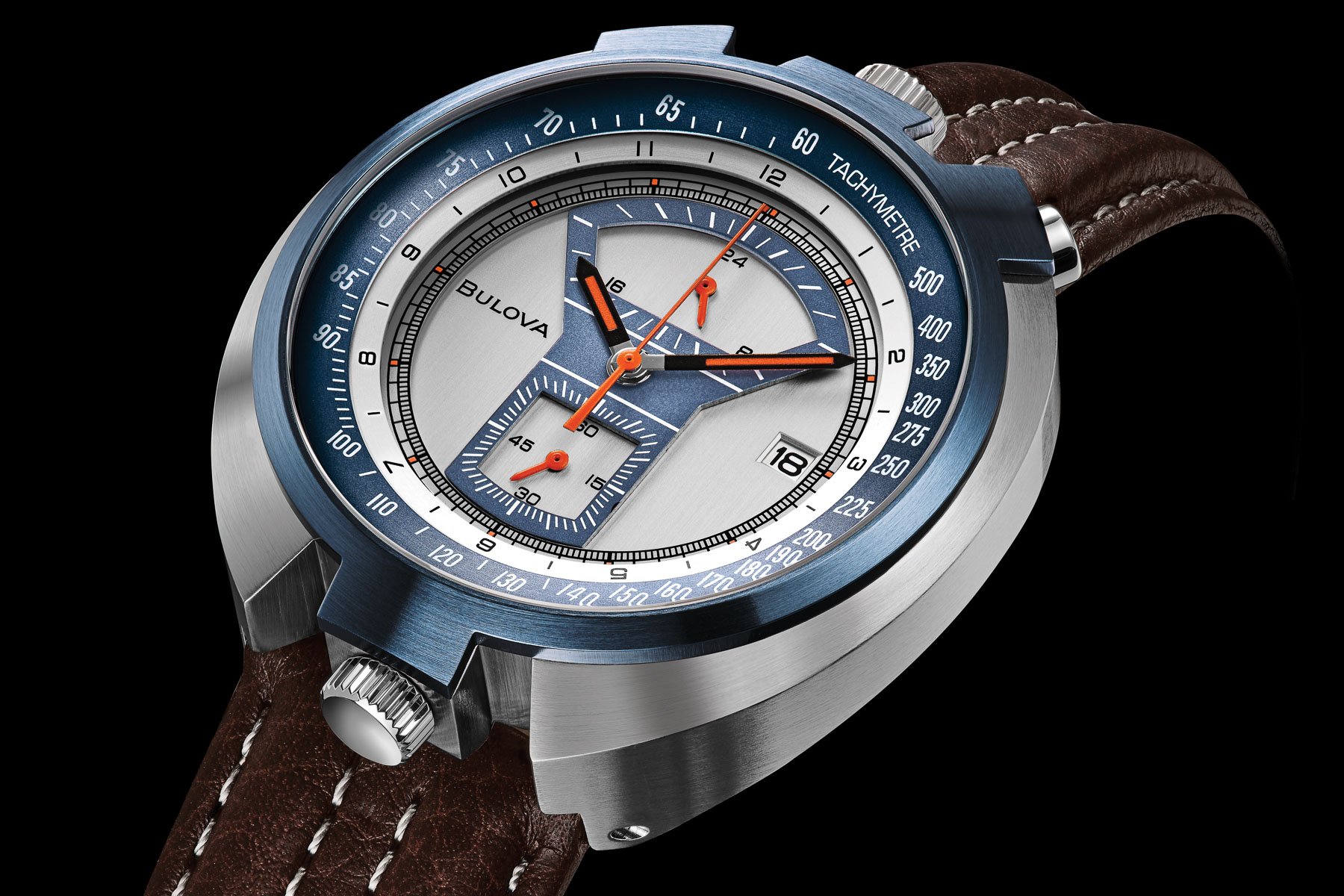With The Bulova “Parking Meter” You Will Never Get A Parking Ticket Again… Or Will You?
Ah, Bulova. A brand with 145 years of watchmaking history and releases that are hit or miss. From collections honoring the iconic American motorcycle brand Harley Davidson to neat WWII re-creations, Bulova has a knack for releasing contradictory collections, some of which are subpar and others objectively cool. The brand jumped on the bandwagon of leafing through old catalogs to see what would be cool to reissue. After releasing an updated Oceanographer — the ubiquitous “Devil Diver” — and the Surfboard, the brand just released a re-creation of its 31008-6W “Parking Meter” from 1973.
Before we get into the review, let me ask you something: what do you actually use your chronograph for? To time how fast a race car swallows a lap or how long your pasta has been cooking? Decades ago, brands created watches that had ultra-specific purposes. They could, for example, calculate the airspeed of a plane or the wearer’s distance from a storm. A quirky type of chronograph was used to time how long you had left before the parking meter ran out. A recent release from Singer Reimagined helps you brew four types of coffee just right. So there are definitely many ways to use a chronograph. I don’t know whether or not the Bulova “Parking Meter” was intended to help avoid parking tickets. Its nickname, however, seems to come from the unique-looking, old-school New York City parking meter shape at the center of the dial. Whatever its intended use, it looks cool. So let’s talk about it.
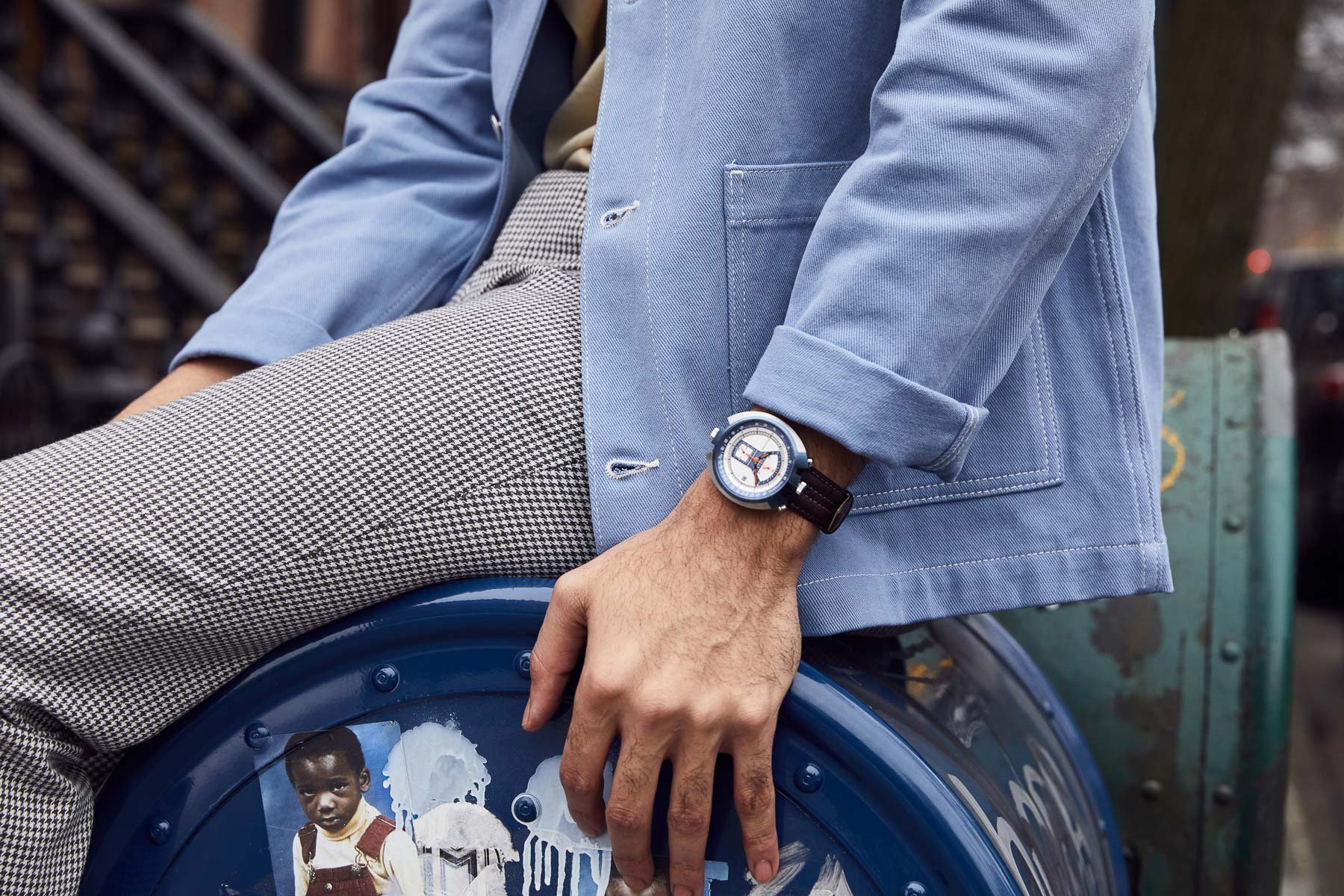
All the chronographs
I must admit that I’ve only recently gotten into chronographs, and I have had a lot of catching up to do. Knowing which brands make famous chronographs, the difference between a column-wheel and a cam-actuated one… There’s a lot to learn. The articles I have read that have captured my interest are those about unique historical models. For example, the all-black Porsche Design or the hand-wound Hamilton Khaki Pilot Pioneer. But once in a while, an article pops up about a funky reissue of a type of watch we no longer have a use for, however nice the watch looks. Other times, an independent brand issues its own take on a vintage-looking chronograph. There are endless chronographs that one could write about and purchase. Although I’m no specialist, I was excited to write about this Bulova “Parking Meter”. It displays a few quirks in design and function that are not common to see packaged in one watch.
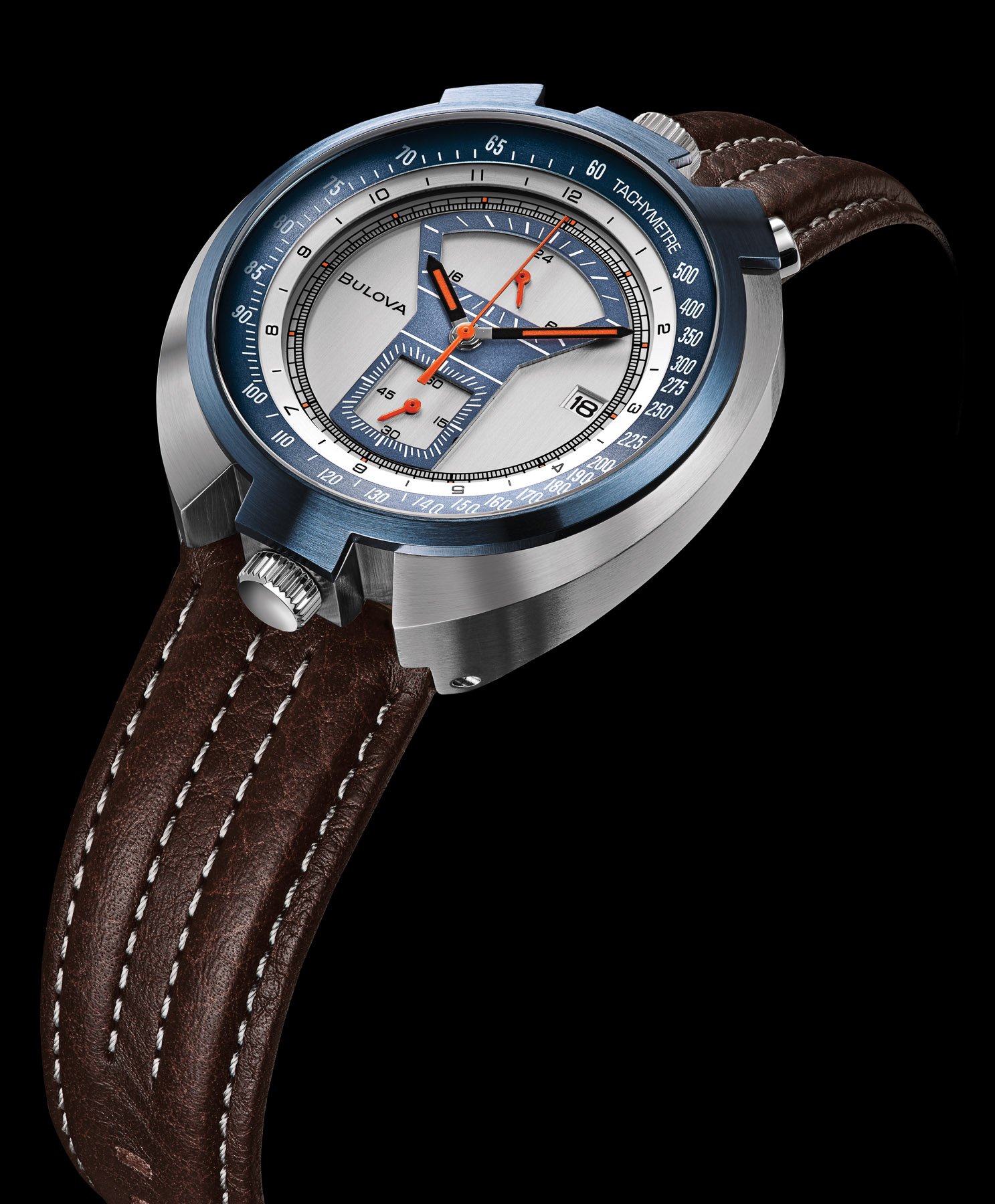
The Bulova 31008-6W “Parking Meter”
This reissue, just like the original one, has a “Bull Head” design with the chronograph pushers at 1 and 11 o’clock. Another popular chronograph had this shape and was also recently reissued — the Citizen “Bullhead”. I honestly do not believe I would ever wear a watch that looks like this, but never say never, right? Regardless of how you or I feel about it, we can agree that it is quite unique. The reissue looks very much like the original in that the color of the parking-meter shape matches the one on the bezel.
The “pronged” blue bezel ring runs around the case, visually connecting the pushers and crowns. The stainless steel mid-case envelops it on the sides. This creates visual dynamism and consistency, showing the parking-meter shape on both the bezel and the dial. This unique shape surrounds the 60-minute chronograph totalizer at the bottom and the 24-hour indicator at the top. My favorite part of the design is the color tones. I find that the silver dial plays well with the blue parking-meter shape and all the orange on the hands. The blue is further echoed on the tachymeter scale, which is color-matched to the outer ion-plated bezel. Another subtle visual detail that I noticed is the white date disc that slightly contrasts with the silver dial. Bulova could have gone too far in balancing the case shape with the various colors, but I feel the designers did a good job re-creating the original look while making it modern.
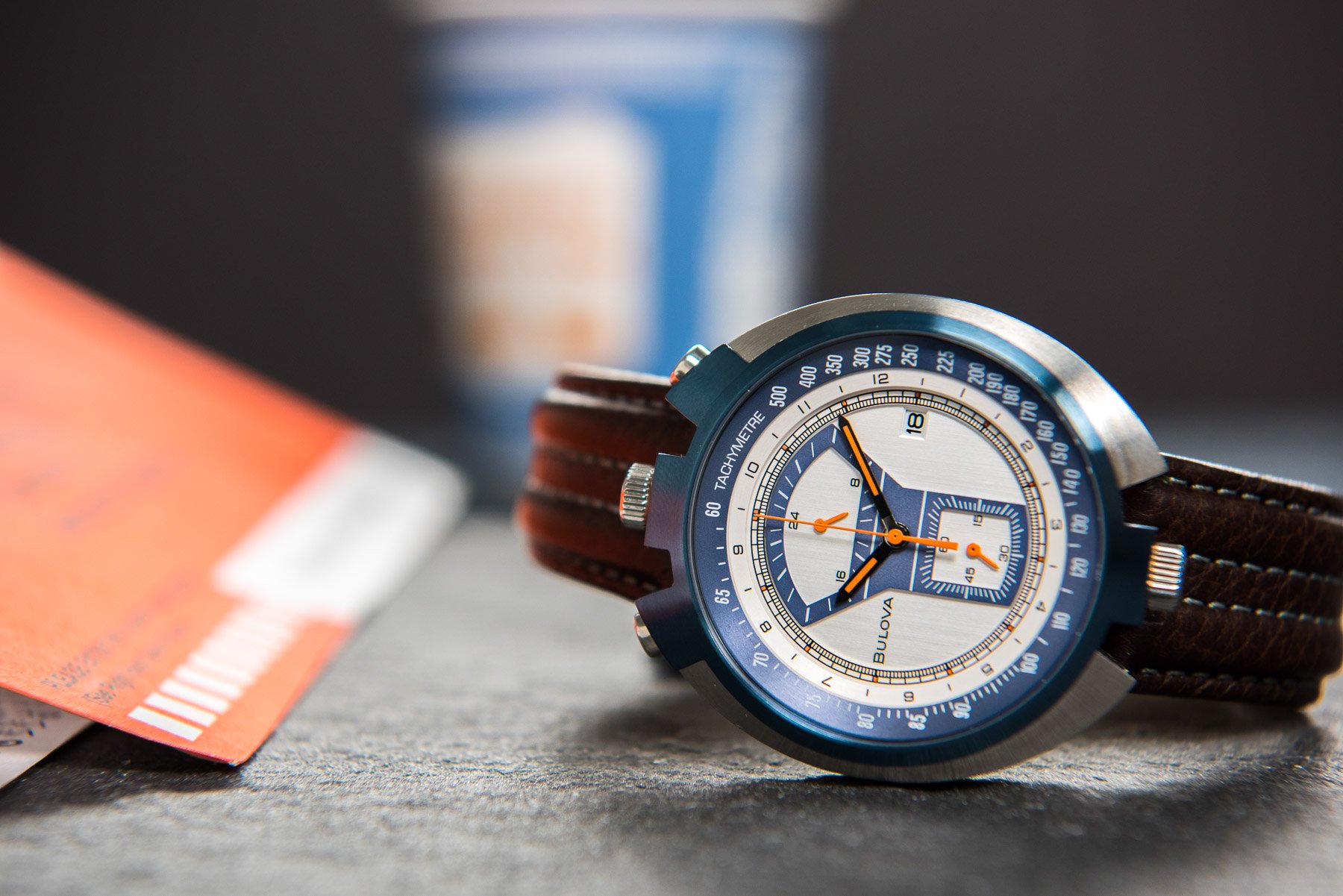
The functions
Honestly, despite what the name might suggest, the “Parking Meter” doesn’t do anything special. The original from the 1970s was equipped with a ChronoMatic movement, which was the first micro-rotor chronograph of the time. This re-creation is equipped with a quartz Miyota 0S21 chronograph movement. I’d say the ChronoMatic was definitely the star of the show in the 1970s in addition to the watch’s design. But as it is often the case with modern re-creation of chronographs from the distant past, Bulova opted for a quartz movement. The Miyota comes with a 24-hour indicator, a 60-minute totalizer, and a date.
This re-creation, however, comes with another trick up its sleeve. With just a quick glance at the watch, you will notice two crowns. The one at 12 o’clock sets the time and date, while the one at 6 o’clock turns the 12-hour inner bezel. The original only had one crown and therefore no inner bezel. I feel that adding this function must have been tricky for the designers at Bulova. I didn’t notice the inner rotating bezel at first, which means it really blends in with the overall design.
Dimensions and price
The “Parking Meter” has all the specs to make it a great everyday watch. First of all, it has the same case size as the original one with both a 43mm diameter and length. That is due to the lug-less design of the case. It is 11.8mm thick, has a 22mm lug width, and comes with a sapphire crystal and 100 meters of water resistance. Lastly, due to its quartz movement, it remains affordable at €590.
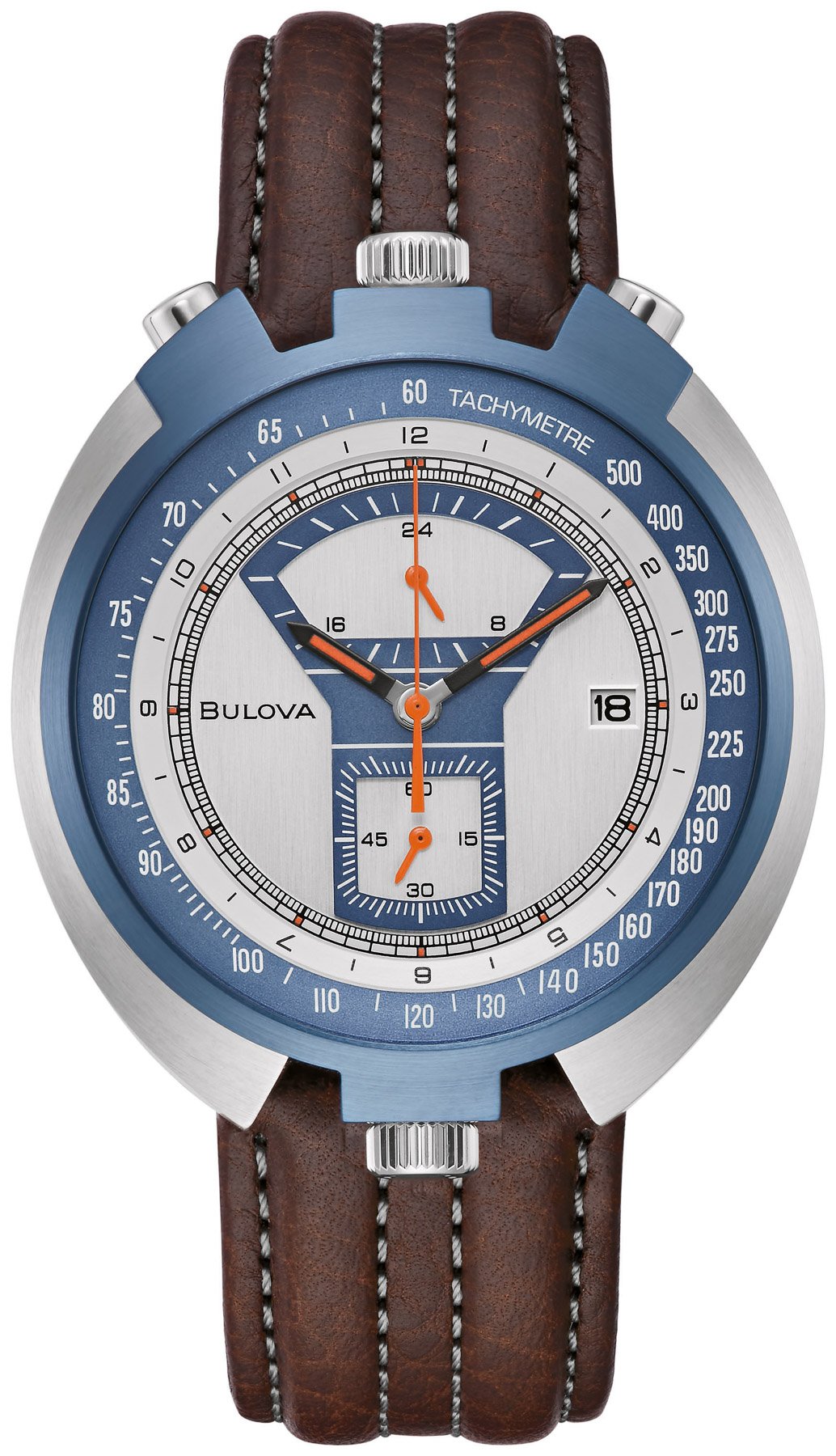
Final thoughts
I’ve got to be honest in saying that my first impression of this Bulova “Parking Meter” was ensnared in skepticism. I found the design looked odd and the watch abnormally big. But the more I looked at it, the more I saw the details that make up the originality of this timepiece. One of the things that Bulova does right is re-issues of certain historical models for a reasonable price. And this is definitely what we have here.
I’d be curious to hear your thoughts on this watch. Please share your comments below.






